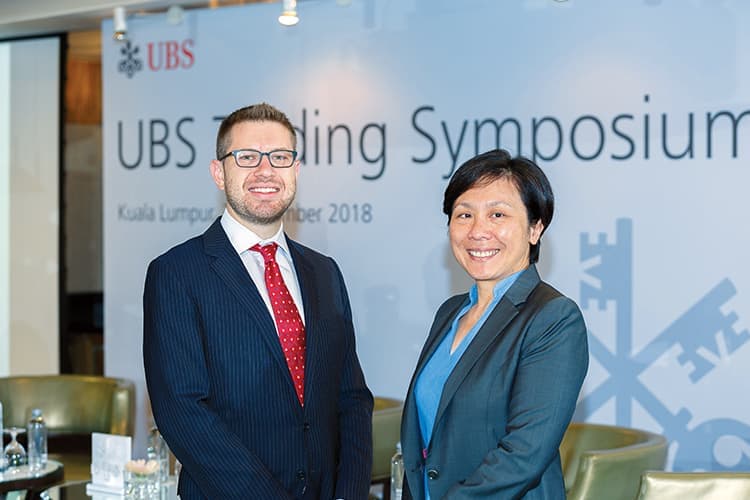
This article first appeared in Personal Wealth, The Edge Malaysia Weekly on October 22, 2018 - October 28, 2018
The rise of exchange-traded funds (ETFs) and passive investing strategies in developed markets could change market dynamics and reduce the liquidity of individual stocks, says Yeoh Choo Guan, head of Asean equities at UBS Group AG.
An ETF tracks the performance of an index by holding a basket of individual stocks that are included in such an index. ETF investors, who are mostly passive investors, adopt a buy-and-hold strategy and do not trade actively in the market. The combination of these factors could result in lower liquidity of individual stocks in the market.
“When investors hold on to their ETFs over the long term and the components of the indices that these ETFs track do not change, it could reduce the liquidity of some of the individual stocks in the market. It would pose a challenge to investors, especially institutional investors that trade individual stocks in blocks,” she explains.
Yeoh says this trend is already happening in the US market where the number of indices that have been created is larger than the number of individual stocks listed on the US stock exchanges. According to published reports, US research firm Bernstein said last year that there were “43,192 different publicly traded companies in the world, but 3.2 million indices tracking various bundles of them”.
The number of ETFs tracking these indices have also been increasing over the past few years.
According to Ernst & Young’s Global ETF Survey 2017, global ETF assets hit US$4.4 trillion in September last year from US$417 billion in 2005, representing a cumulative average growth rate of 21%.
“In fact, ETFs now represent about one-third of the US equity market, which has brought about significant changes to the market structure,” says Vlad Khandros, managing director and global head of market structure and liquidity strategy at UBS.
He adds that investors can expect to see a change in market dynamics when quantitative trading and investing strategies become more prevalent.
Quantitative-focused investors typically buy and sell shares and ETFs based on mathematical computations, number crunching and computer algorithms. They mainly focus on historical prices and volumes in their trading decisions instead of the companies’ fundamentals. Khandros says ETFs that track the movement of indices are also likely to encourage greater participation of quant investors in the market.
ETFs are not yet a common investment instrument in most Asian countries and these trends will take time to develop. “However, it is important for investors to keep abreast of upcoming trends … institutional investors [in particular], as they tend to invest globally and across different asset classes,” says Yeoh.
Save by subscribing to us for your print and/or digital copy.
P/S: The Edge is also available on Apple's AppStore and Androids' Google Play.